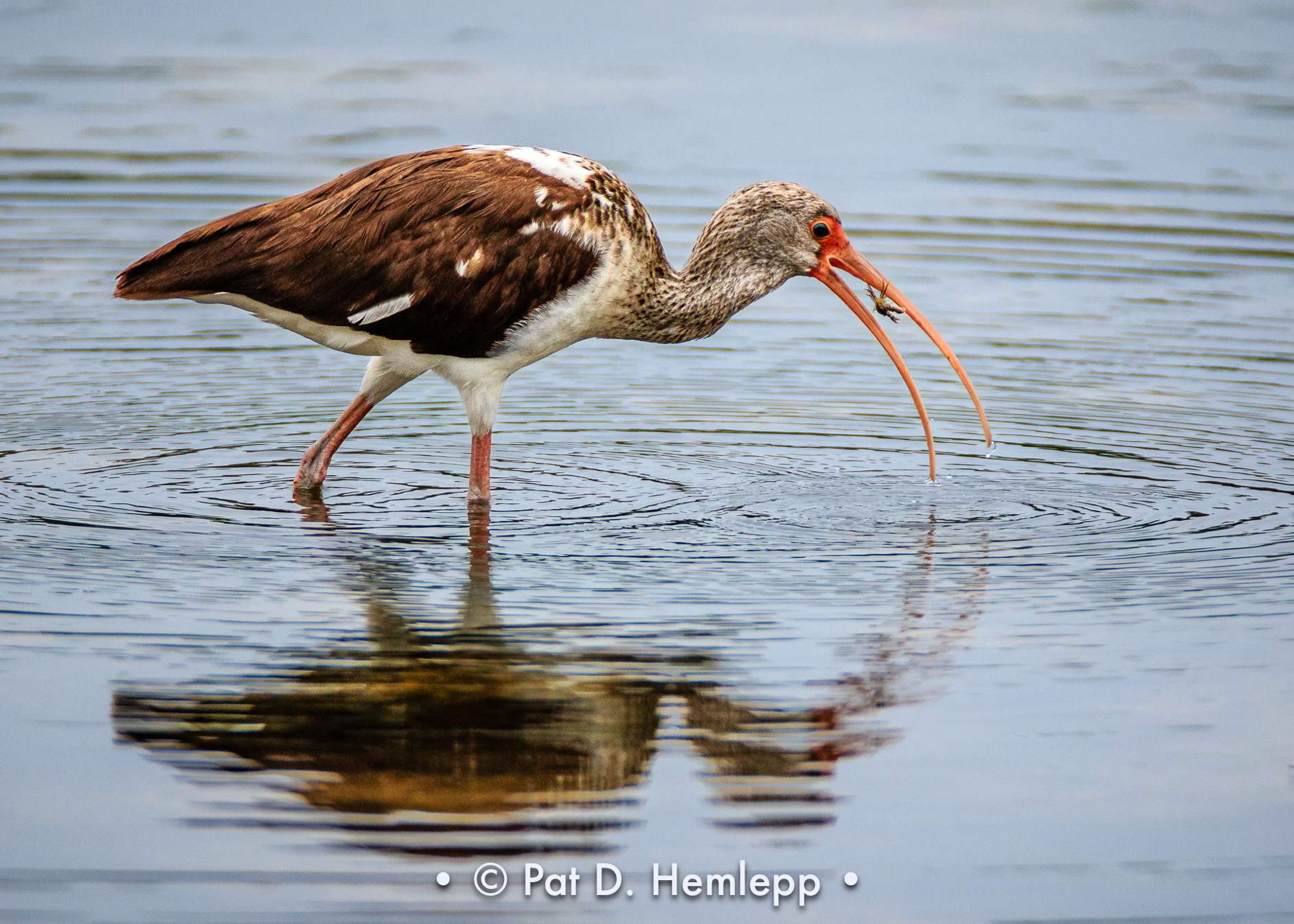-
Menu

An immature White Ibis catches food in J.N. 'Ding' Darling National Wildlife Refuge, Sanibel, Fla.
Unless you live in or near a coastal area there’s a good chance you’ve never seen a White Ibis. In the United States, the species’ range is limited to the southeast Atlantic coast, the gulf coast and all of Florida.
The White Ibis is readily identifiable, thanks to its very long, curved reddish-pink bill extending from a body covered with bright, white feathers above long, reddish-pink legs.
But it may not be as readily identifiable if the white ibis happens to be a juvenile, like the one in this photo. Juveniles, during their first fall through first winter, are brown above and white below with a streaky brown neck. The legs and bill of juveniles are orange-pink. So it’s likely this bird was less than nine months old. Immature White Ibises, the birds in their first summer, are splotchy brown and white above as they molt into the white adult plumage.
All About Birds, my favorite bird information website, says this about the White Ibis: “They insert their bill into soft muddy bottoms and feel for prey. When they feel something, they pinch it like a tweezer, pulling out crayfish, earthworms, marine worms, and crabs. They also stab or pinch fish, frogs, lizards, snails, and newts. Many of their prey are swallowed on the spot, but for really muddy items they carry them away to wash the mud off before eating. They break harder crustaceans with their bills and remove claws from crabs and crayfish before eating them.”
Like the many species of herons and egrets we see in Florida, the ibis is a wading bird. But unlike other wading birds, the ibis has easily adapted to the growing population in south Florida. Groups of ibises will walk across a lawn or park, repeatedly probing the ground with their bills to grab insects hiding in the grass or soil. And if people happen to be on the lawn, the ibises will give them room while continuing their work. They don’t spook and flee.
We joke that the ibises are part of the lawn care crews that are ubiquitous in southwest Florida. The ibises serve as a chemical-free insecticide, clearing a lawn before walking next door for their next project.
This young ibis was hunting for food in one of the waterways inside J.N. “Ding” Darling National Wildlife Refuge on Sanibel Island in Florida. The bird had caught a small crayfish and was flipping it to get it better positioned in its bill.
The Ding Darling refuge is difficult to get to much of the year because of heavy traffic on the one bridge that crosses from the southwest Florida mainland onto Sanibel Island during the crowded winter season. But the refuge is worth visiting because of the incredible variety of birds that inhabit the area.
Tech specs